- Urbaki Pets
- Horses
- Equine Therapy: How Horses Are Helping Humans Heal
Equine Therapy: How Horses Are Helping Humans Heal
10/08/2024 · Updated on: 14/10/2025

Equine-assisted therapy (EAT) is an umbrella term for interventions that involve horses to support mental, emotional, and physical health.
Unlike casual riding lessons, these programs are designed and supervised by trained professionals—often licensed mental health clinicians, physical or occupational therapists, or certified therapeutic riding instructors—who use structured activities with horses to meet specific goals.
People are drawn to horses because they’re large, sensitive, and honest: their behavior offers immediate, non-judgmental feedback, which helps clients practice regulation, trust, communication, and boundaries in real time.
Therapeutic Modalities With Horses
Equine-Assisted Psychotherapy (EAP)

EAP integrates horses into psychotherapy. Sessions typically happen on the ground—no riding—with activities like grooming, leading, obstacle courses, or herd observation.
A licensed therapist guides the process to address anxiety, trauma, depression, grief, or relationship challenges.
The horse’s responses can mirror a client’s internal state, helping them notice patterns, practice distress tolerance, and rehearse healthy communication.
Therapeutic Riding (TR)
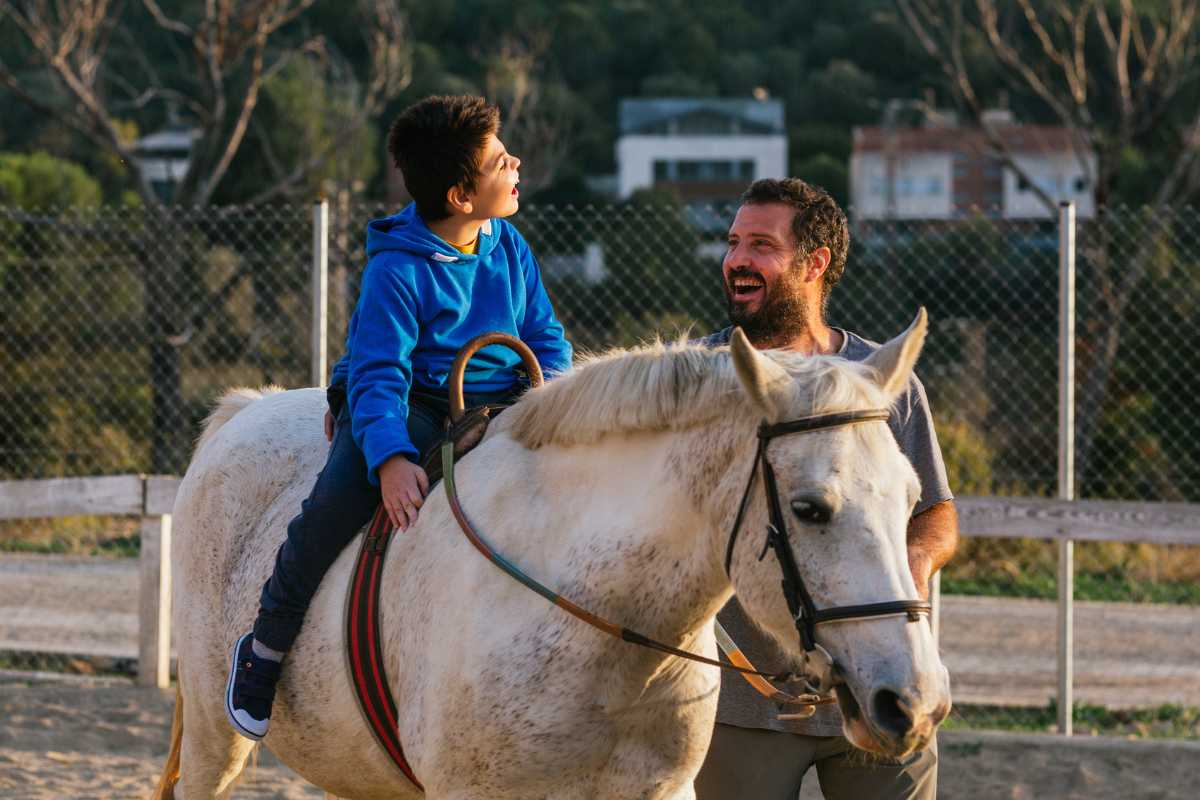
Therapeutic riding focuses on skill-building and confidence through mounted activities, taught by certified riding instructors trained to adapt exercises for diverse abilities.
Riders work on posture, coordination, and planning while experiencing mastery and joy. While not psychotherapy, TR can complement mental health goals by strengthening self-efficacy, focus, and social engagement.
Hippotherapy (PT/OT/SLP)
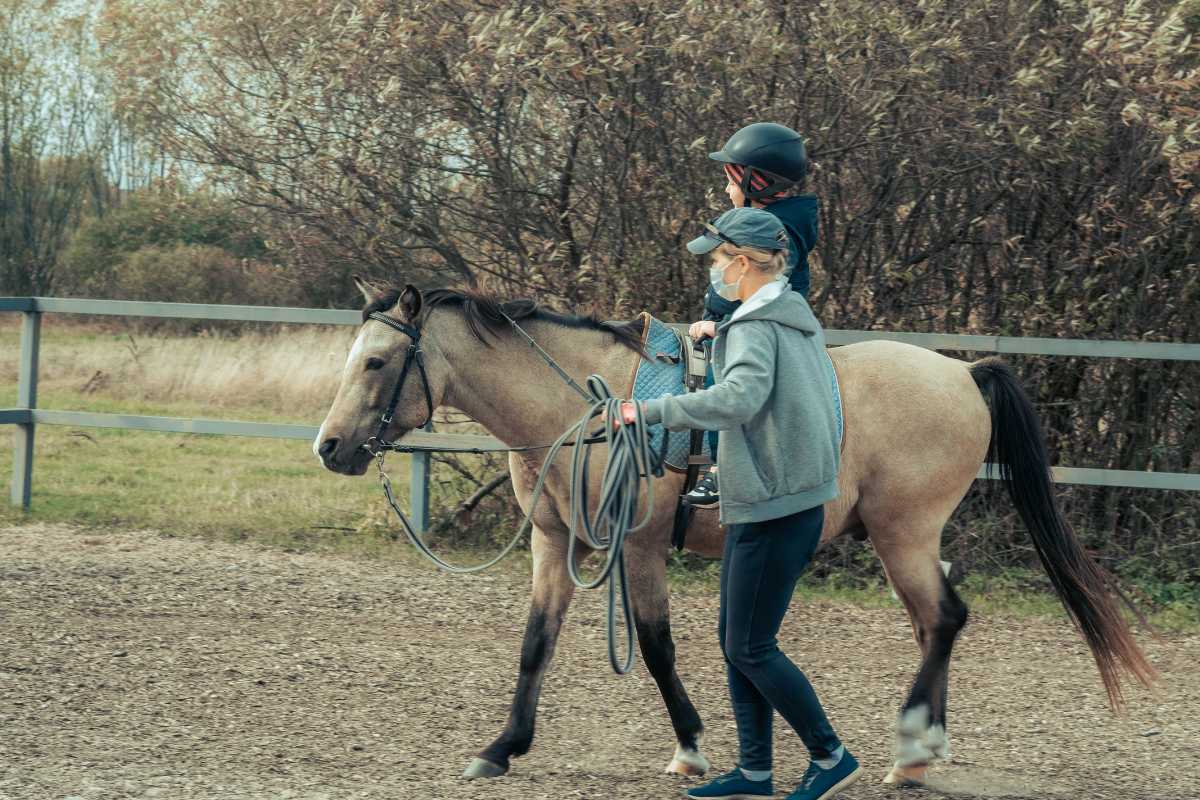
Hippotherapy is a clinical treatment strategy where physical therapists, occupational therapists, or speech-language pathologists use the horse’s three-dimensional movement to stimulate the rider’s core stability, balance, motor planning, breath control, and sensory integration.
It looks like riding, but every minute is therapist-directed: gait changes, transitions, and positioning are chosen to create specific neuromotor inputs linked to the client’s goals.
Who Benefits: PTSD, Anxiety, Autism, ADHD & More
Because horses invite attunement and co-regulation, EAT can support people with PTSD, anxiety, depression, autism, ADHD, addictions, and grief or stress-related disorders.
Children may improve impulse control and social skills; teens often practice identity, boundaries, and resilience; adults explore trust and nervous-system regulation; older adults may gain mobility, balance, and meaning.
Importantly, equine programs do not replace medical or psychiatric care—they complement it within a coordinated plan.
How It Works: Regulation, Trust, and Real-Time Feedback

Horses are prey animals with highly tuned nervous systems. They pick up on posture, muscle tone, breathing, and micro-behaviors, often reflecting the human’s internal state.
When a client slows their breathing, softens their stance, or clarifies their intention, the horse typically responds—a living biofeedback loop. This interplay teaches self-awareness, emotional regulation, and clear communication.
Physically, the horse’s rhythmic movement can entrain gait, challenge the vestibular system, and activate core musculature, supporting better balance and coordination.
What a Session Looks Like: From Intake to Outcomes
A good program starts with a thorough intake (history, goals, consent, risk review), followed by a personalized plan with measurable targets. A typical session might include:
Groundwork (approach, haltering, leading through cones) to practice focus, boundaries, and body awareness.
Grooming to build sensory tolerance, patience, and connection.
Mounted work or movement-based activities when clinically indicated to target balance, tone, breath, and sequencing.
Processing and reflection, where the client and professional translate horse-human moments into real-life skills.
Progress is tracked with observable metrics (e.g., reduced startle response, improved balance tests, fewer school incidents, better sleep, increased social participation) and client-defined outcomes.
Evidence Snapshot: What Research Suggests
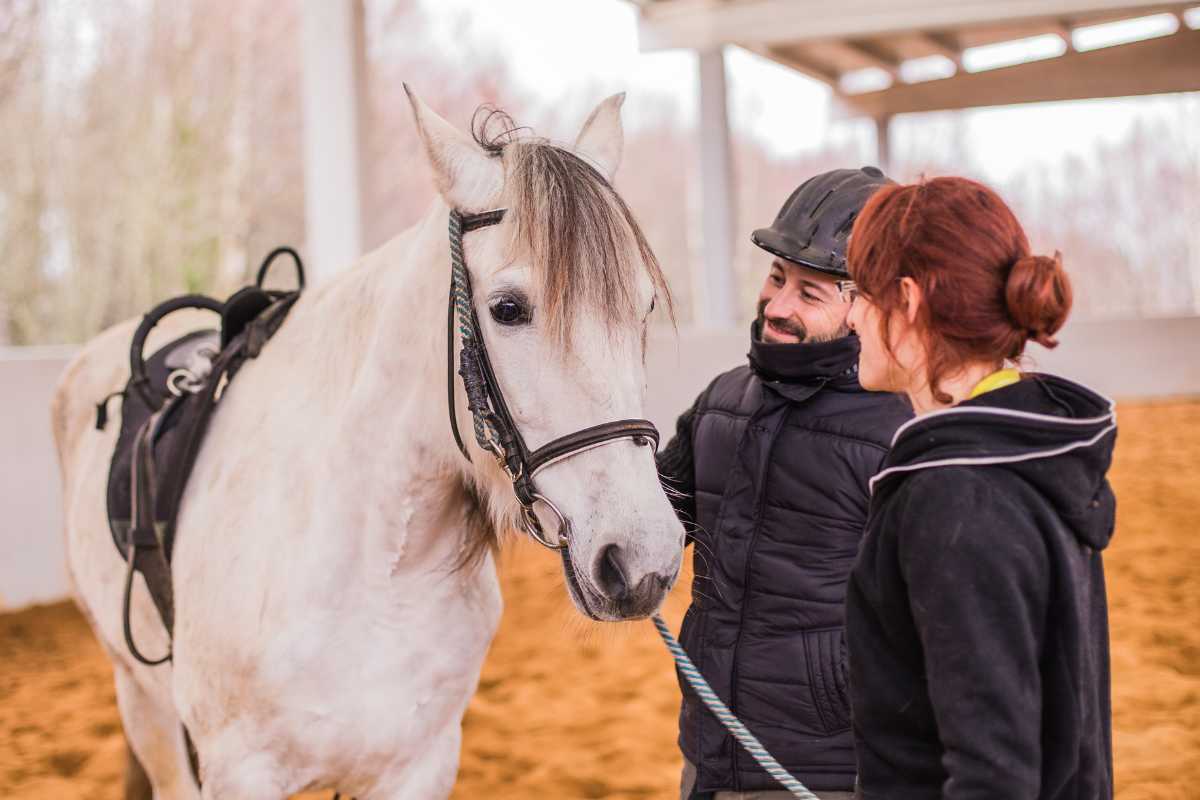
Early and emerging studies suggest that equine-assisted interventions may be associated with lower anxiety, improved PTSD symptoms, better emotional regulation, and enhanced balance and core strength in various populations.
Mechanisms include co-regulation, graded exposure to manageable challenges, embodied learning, and multi-sensory input that makes new skills “stick.”
While research quality continues to improve, the current consensus is that qualified providers, clear goals, and consistent dosing are key to meaningful outcomes.
When you evaluate programs, look for transparent methods, safety protocols, and data collection—these are markers of evidence-informed practice.
Safety, Contraindications & Horse Welfare Standards
Safety is central. Programs screen for allergies, uncontrolled seizures, severe osteoporosis, recent fractures, acute injuries, open wounds, or severe fear of horses.
Helmets are standard for mounted work; sturdy footwear is used on the ground. Staff should review emergency procedures, know safe spacing between horses, and keep herd dynamics in mind.
Equally important is equine welfare: well-fitted tack, appropriate work-rest cycles, humane training, and careful monitoring for stress signs (ears pinned, tail swishing, tension, avoidance).
A healthy, respected horse is the foundation of ethical, effective therapy.
Cost, Access & How to Find Accredited Providers
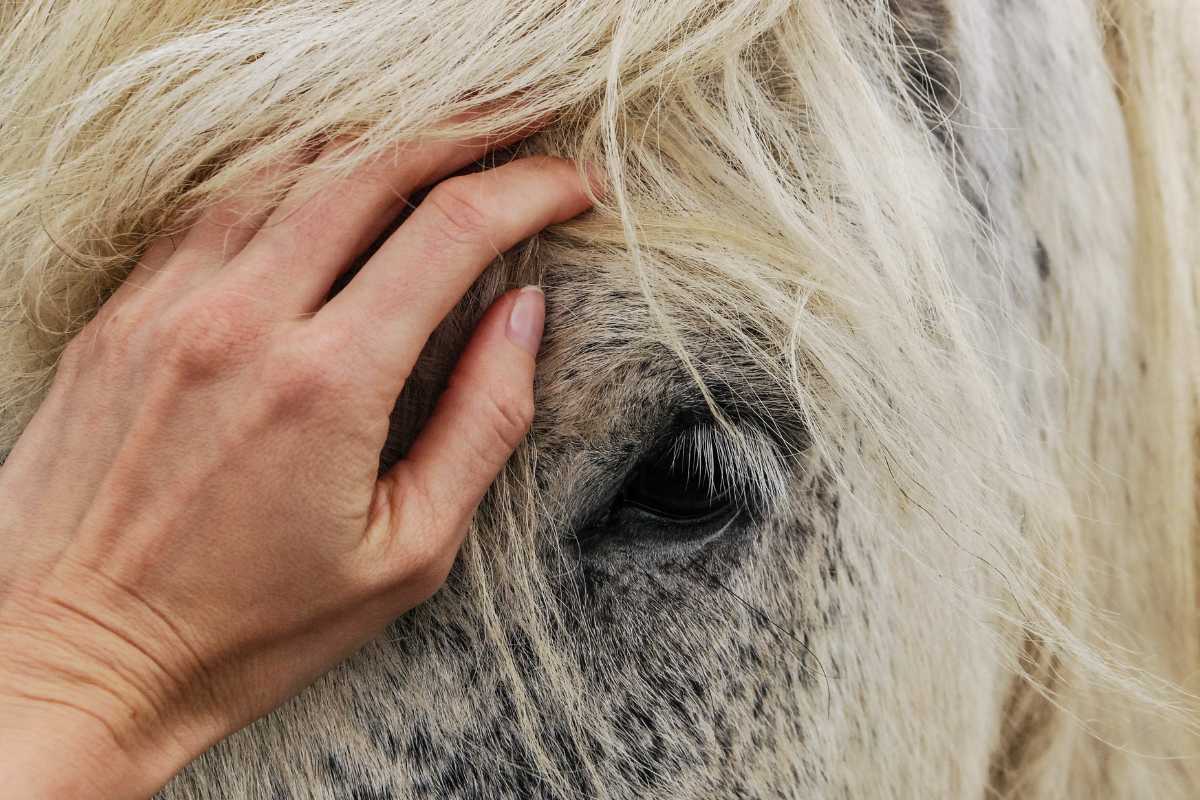
Costs vary by modality, region, and session length. Some programs offer sliding scales, grants, or veteran-focused funding.
To find reputable services, search for credentialed professionals (licensed therapists for EAP; PT/OT/SLP for hippotherapy; certified instructors for TR), program accreditation, and continuing-education standards.
Ask about waitlists, insurance or reimbursement options, and whether the program coordinates with your existing healthcare team.
Veterans’ Programs: Targeted Trauma Recovery
Many centers run trauma-informed groups for veterans and first responders. Activities emphasize choice, control, and trust, with a focus on nervous-system regulation, rebuilding self-efficacy, and re-engaging in community.
Some programs integrate peer support, family sessions, or mind-body skills (breathwork, grounding) alongside equine work.
If you’re a veteran, ask about cost coverage, eligibility, and group composition to ensure the fit is right.
Quick Comparison of Modalities
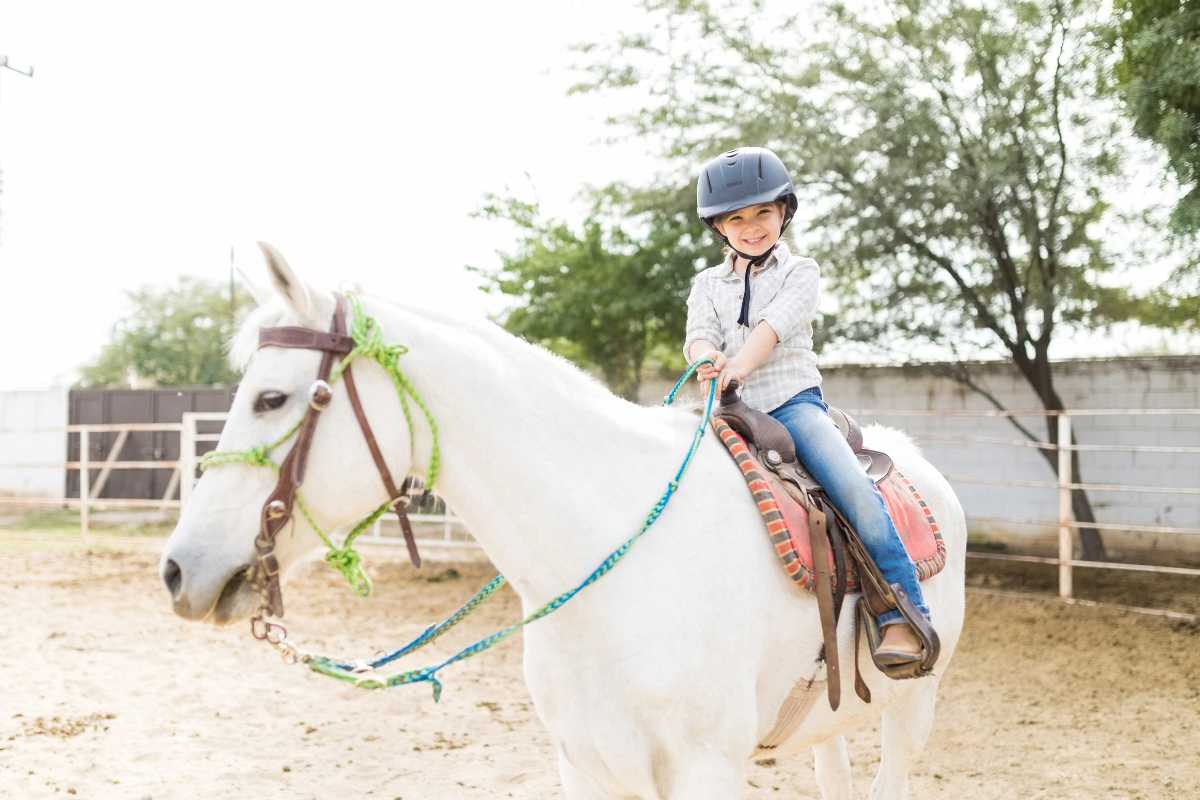
| Modality | Led By | Typical Activities | Primary Goals | Session Style |
|---|---|---|---|---|
| EAP | Licensed mental health clinician + equine specialist | Groundwork, herd observation, structured tasks | Emotional regulation, trauma processing, communication | Psychotherapy with horses present |
| Therapeutic Riding | Certified riding instructor | Adaptive riding, mounted games, patterns | Confidence, coordination, attention, social skills | Skill-based riding lessons |
| Hippotherapy | PT/OT/SLP | Mounted movement used as a treatment tool | Balance, core strength, breath, motor planning, speech support | Clinical therapy using the horse’s movement |
How to Choose a Quality Program: A Practical Checklist

When you’re ready to start, use this simple checklist to make a confident choice:
- Credentials & Scope: Are sessions led by licensed or certified professionals within their scope (therapy vs. instruction vs. rehabilitation)?
- Safety: Helmets for mounted work, clear emergency protocols, appropriate horse-to-client ratios, and informed consent.
- Equine Welfare: Well-fitted tack, rest days, turnout, and behavior monitoring; horses matched to client needs.
- Individualized Plan: Specific goals, baseline measures, and regular progress reviews you can understand.
- Environment: Calm, clean facilities, accessible restrooms, mounting ramp if needed, and weather plans.
- Collaboration: Will they coordinate with your clinician or care team? Are caregivers invited to participate when appropriate?
- Transparency: Clear pricing, cancellation policies, and information on funding or scholarships.
Real-World Example: A First Month, Start to Finish
Week 1 – Intake & Orientation: You share history and goals. You meet the herd from outside the fence, practice breath awareness and boundary setting.
Week 2 – Groundwork & Trust: You groom and lead a calm horse through a simple pattern, noticing how your posture shifts their response.
Week 3 – Adding Complexity: You navigate obstacles that require planning and communication. Emotions arise; you practice grounding and try again.
Week 4 – Integration: You reflect on what changed—fewer racing thoughts, steadier breath—and set next-step goals with your provider.
FAQs

Is this safe for beginners who’ve never been around horses?
Yes—programs tailor activities to your comfort level. Many sessions begin entirely on the ground. You’ll learn safety rules, spacing, and reading horse signals before doing anything more involved.
Do I need to ride to benefit?
No. Ground-based sessions can be profoundly effective for anxiety, boundaries, and self-awareness. Riding is included only when it supports your goals and is clinically appropriate.
How long until I notice results?
It varies. Many people report early wins—better sleep, steadier mood, or improved focus—within a few sessions. Meaningful change comes from consistency, clear goals, and a skilled team.
Can children or older adults participate?
Yes, if the program can safely accommodate their needs. Providers will screen for mobility, sensory, or medical considerations and adapt activities accordingly.
What should I wear or bring?
Closed-toe shoes or boots, weather-appropriate layers, water, and any required medications. For mounted work, helmets are typically provided or required.
Your Next Step
If this approach resonates, start by clarifying your goals—less anxiety, better balance, stronger communication, or trauma recovery—and then contact a credentialed provider who can map out a plan.
Ask to tour the facility, meet the horses, and review safety and progress measures.
With qualified professionals, ethical horse care, and a clear plan, equine-assisted therapy can become a grounded, hopeful path toward healing—one steady breath and one soft hoofbeat at a time.
Enjoy The Video About Horses

Source: Great Big Story
Did you find this post useful or inspiring? Save THIS PIN to your Pets Board on Pinterest!

Urbaki Editorial Team is the collaborative byline behind our pet-care guides. Our writers and editors turn evidence and real-life experience into clear, humane advice on training, wellbeing, nutrition basics, and everyday life with animals. Every article is planned, written, and edited by humans, fact-checked against reputable veterinary sources, and updated over time. This is an editorial pen name—see our Editorial Policy. Educational only; not a substitute for veterinary advice.

You may also like